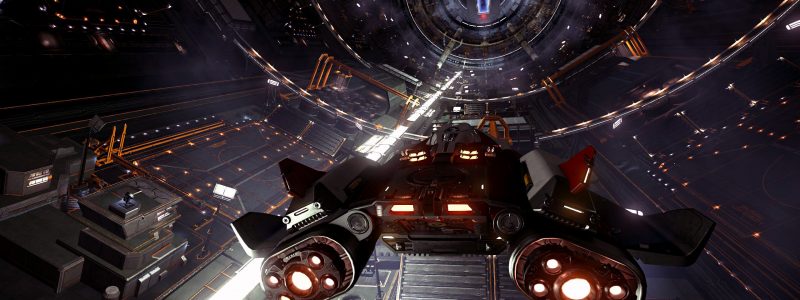Greetings commanders,
I recently wrote up this guide for my brother and figured why not share it with the rest of the Elite Dangerous community. Personally, I find it makes playing on controllers much more manageable when you want to do certain things like target wingmen, use heatsinks/chaff/ECM/shield cells, toggle night vision, or whatever other feature the game offers that don't fit on the default controller bindings (even with classic context or default context controller options).
Initial setup takes a bit of work, but once you have the binds you want, you never have to think about it again. What's great is it will even carry over across machines if you play the game on multiple computers, like if you have a desktop and laptop, thanks to it being linked to your Steam account. (This is notable because, for whatever reason, Frontier doesn't offer a way to sync their own in-game keybinds across multiple installations of Elite Dangerous)
In my screenshots, you'll see Steam displaying a Nintendo Switch Pro controller because that's what I use, but it will work with any gamepad. Without further ado, here is the guide:
[This is a Google Docs link]
For those who prefer a text-only guide without screenshots, or who are averse to Google, here it is:
How to use Steam Input Radial Menu in Elite Dangerous
By Ryvaeus
Prepare Steam Input recognition for Elite Dangerous
- Right-click Elite Dangerous in your Steam library.
- Go to Properties, then Controller.
- In the drop list, select “Enable Steam Input.”
- At the top-right of the Steam launcher, click on Steam > Settings > In-Game.
- Check “Use the Big Picture Overlay when using a Steam Input enabled controller…”
Configure your controls within Elite Dangerous
- Start the game and proceed to the Options > Controls menu
- Make sure all of the options you want bound to the radial menu are set up
- You can use modifiers such as Shift, Ctrl, and Alt (or any combinations of these) + any key to assign bindings to any supported function
Configure your Steam Input controls
- Open the Steam Overlay (Shift+Tab by default) and proceed to Controller Configuration.
- At the top, click “Add Action Layer,” give it a name, and click OK.
- Decide which controller button you want to use as a trigger for the radial menu. Suggested buttons are Select/Back on Xbox controllers, the Screenshot/Capture button on Nintendo Switch Pro controllers, or R3/RS Click if you don’t use Headlook a lot.
- Select the button you’ve decided on in the configuration menu. In this guide, it will be Select.
- Click on “Show Activators” at the bottom.
- Click on “Add Activator.”
- Click on the empty box under “Binding.”
- Click on “Action Set” binding. It is the first icon beside the text input field, highlighted in the screenshot.
- Choose “Hold Action Layer,” and click OK.
- Choose the action layer you just made, and click OK.
- Click “Back” to return to the main menu.
- At the top of the menu, click on the action layer you created.
- Click on the box with the “Joystick Move” and “RS Click” bindings, which should be pointing to the Right Analog Stick in the configuration GUI.
- Under “Style of Input,” change it to “Radial Menu.”
- Click on the empty box under “Menu Button 1.”
- Set your desired binding. Note that you can press the Steam Overlay command (Shift+Tab by default) to return to the options menu at any time, so you can refer to your Elite Dangerous keybindings at any time. Then, return to the Steam Overlay and you’ll be back exactly where you left off in the controller configuration menu.
- If your binding requires the use of multiple keys, such as Shift+X, click on “Toggle Multi-button On” at the bottom of the binding menu.
- Click on the Icon selection box at the right side of the binding menu, choose an icon and color, then click on “Back” to confirm the selection.
- Click on “Back” again to confirm the binding.
- Repeat steps 17–22 for as many commands as you wish to have in your radial menu. If you need more than 5 commands, click on “Additional Settings” to define up to 20 radial menu items.
- Note that you can also set a command for clicking in the Right Analog Stick, by defining a keybind in the “Click Action” box.
- When you have finished setting up your radial menu buttons, click on Back to confirm the configuration.
- Click on Done at the bottom of the menu, then Return to Game.
- Test the menu by holding down your radial menu toggle key (in this guide, it was Select) and moving the Right Analog Stick. You should see an on-screen GUI representing your selection choices appear at the right side of the screen.
Notes
- The original function of your chosen radial menu toggle key will not be replaced by these settings. It will still function as configured by default. In the case of this guide’s selected key, “Select,” it will still function as a back button when in FSS/DSS interfaces as well as a Drive Assist toggle when aboard the SCV.
- The position of a button on the on-screen GUI depends on how many buttons are configured.
- The steps in part 1, Prepare Steam Input recognition, are required in order for the on-screen radial menu GUI to appear. If Steam does not think the game was launched in Big Picture Mode, it will not enable these Steam Input overlays. The settings in part 1 allow users to enable the Steam Input overlays even without launching Steam in Big Picture Mode.







